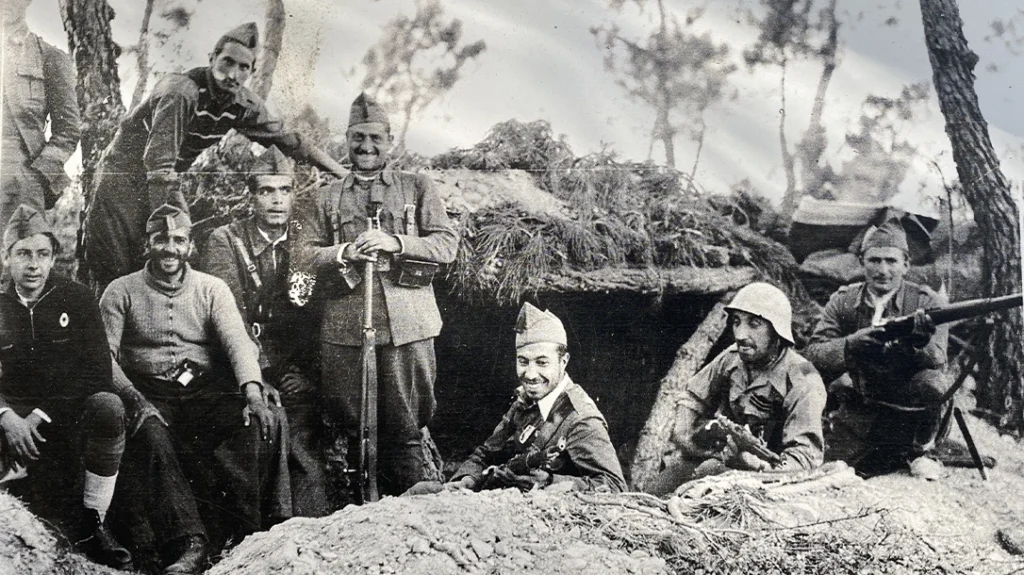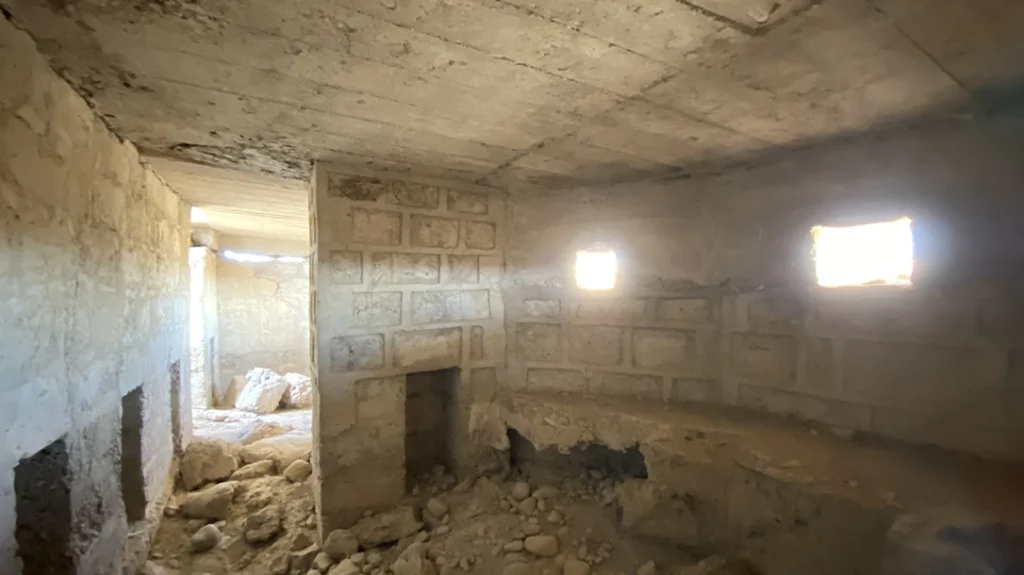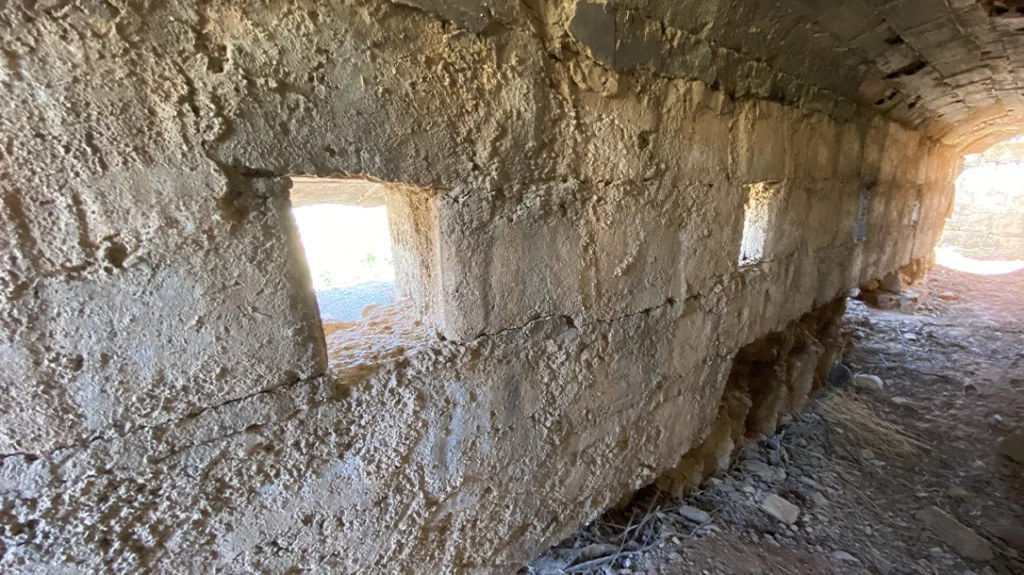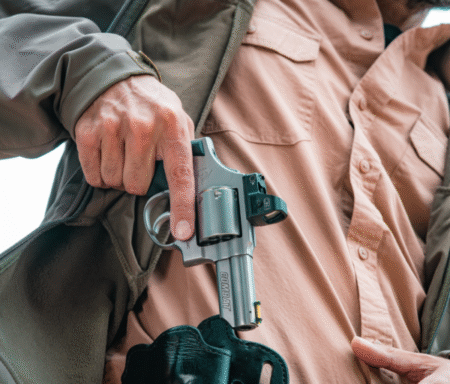Scattered across the Spanish countryside and within Spain’s cities are ghostly concrete remnants of the Spanish Civil War. If you know where to look, aren’t afraid of the occasional palm sized spiders and dare to trespass, these largely abandoned and sometimes repurposed monuments of Spain’s bloody history are worth the sweat and risk to explore.
In October 2024, I traveled to Spain to tour the Aragon province and participate in a Spanish Civil War living history display with Divulga Historia Frente Andaluz, a Spanish amateur historical association dedicated to preserving the stories of Spain’s civil war.
Prior to my trip, I had only communicated with their members online, trading photographs and thoughts about Spanish Civil War history. After they invited me to Spain to join them for one of their many programs, I knew all those hours spent learning Spanish in high school would finally pay off. These newfound friends of mine made this story possible because they showed me the tools needed to find the long-lost fighting positions that dot Spain’s landscape: Google Maps and original photos.
Advertisement — Continue Reading Below
Tracing The Past
From ground level, old fortifications are often concealed in plain sight. They’re often located inside agricultural fields, in valleys and behind abandoned stone houses. With the help of a Google Maps satellite view, the long eroded trenches pop out vividly as winding snakes over the tops of the dusty Aragonese hills, and the bunkers like oddly symmetrical boulders.
It seemed to me like almost every major road south and east of Zaragoza still extant from 1936, had some concrete defensive bunkers and trenches nearby to defend it. These landmarks of war never went away. When the Spanish Civil War ended, the Nationalist soldiers that once occupied these positions went back to their homes, eager to forget the bloodletting that tortured their country for more than two and half years. For Republican soldiers and civilians, losing the war meant years of imprisonment (and sometimes execution) or exile. It’s no wonder the physical landmarks of war gradually slipped from memory and fell into decay.
Advertisement — Continue Reading Below
Belchite
After renting a car in Zaragoza, I drove 35 minutes towards the A222 highway turning to the Belchite battle front. This site saw months of intense fighting beginning with the massive Republican offensive in the summer and autumn of 1937. Zaragoza was a primary objective of that offensive because it was the largest city in the region–and deeply important to the Catholic faithful that supported the Nationalist Spain. The Republican thrust got badly stalled around the small town of Belchite. Belchite’s vastly outnumbered defenders managed to hold out for two weeks despite repeated artillery, aerial bombing, tank and infantry attacks. The Nationalist defense of Belchite was nothing short of heroic. In fact, the city is preserved to this day in its utterly ruined state as a monument to the suffering and destruction of the Civil War. It’s a must-see if you visit the area.
For all their military efforts, the Republicans didn’t hold onto this area for very long. By the Spring of 1938 the Nationalists launched a massive offensive of their own. They quickly regained all the territory they lost and more.
Z-M-5 Los Barbis’ Concrete Fortifications

Advertisement — Continue Reading Below
In 1936, the year before the Republican offensive towards Zaragoza, the 5th Zapadores-Minadores (5th Sapper-Miner Battalion), a Nationalist Army engineer unit, labored to build numerous defensive works to fortify the region against Republican attack.
Unlike Republican engineer units that typically built impermanent fortifications with un-mortared stacked stone and wood, the 5th Zapadores-Minadores used modern construction techniques.
They particularly relied on poured concrete to build solid structures. Many still stand today since destroying them was just too much work. The 5th Sapper-Miner Battalion was proud of its work and often marked it with their unit designation “Z-M-5” or their nickname “Los Barbis.” It translates as “The Beards”.
Advertisement — Continue Reading Below
The first of the 5th Zapadores-Minadores works I visited was a massive bunker. This fortification looked like it would have been perfectly at home in Rommel’s Atlantic Wall defenses along the coast of France.
In its present surroundings, this specific fortification could be easily mistaken for the foundation of a long-gone wooden house. The area surrounding it was overgrown with high grasses. The fortification itself was nestled on a strip of ground barely wide enough for it. It currently sits between modern railroad tracks and a graffiti covered highway overpass. Unfortunately, it was completely sealed and I couldn’t get inside. It’s common for these old defensive works to be sealed or filled in.
About 1,000 yards away and part of the same defensive system, I found a well-preserved pair of conjoined machine gun bunkers that now stand guard, incongruously, over a cornfield next to a modern shipping warehouse. Before the harvest, tall corn stalks render these positions virtually invisible.
Advertisement — Continue Reading Below
The Belchite Bunkers

After parking on the warehouse service road near a derelict farm dwelling, I discovered a modern concrete irrigation channel that stood above the chest high grass along the edge of the field. After five minutes of “balance beam” walking on the side of the channel, the first dual bunker came into view. Take away the trappings of modernity with your mind’s eye, and you’ll see yourself in the Nationalist front line positions.
Facing east towards a major road junction, the machine gun crews in these positions provided overwatch on the A222 and N232 south east of Zaragoza. The memory of the August 1937 Republican offensive remains in sporadic bullet impacts pockmarked all over the bunker’s exterior face.
Advertisement — Continue Reading Below
Since these positions were much harder to reach and clearly on private property, there was no graffiti on them. To my delight, they weren’t sealed off either. Their interiors were similar, with ammunition alcoves cast into the walls and firing steps for riflemen to shoot though the gun ports.
One bunker showed evidence of being repurposed for modern needs. It had an improvised fireplace and high chimney. I suspect farm laborers used it to cook their meals while working the fields. I bet they would have also found the bunkers’ thick walls and roof as good shelter from the hot sun during their siesta.
El Saso

The greatest of the 5th Zapadores-Minadores defensive fortifications I saw on the Aragon front was, without a doubt, El Saso. Unlike the previous sites, this one is nationally recognized, if little visited and open to the public.
The mostly cleared pillboxes and tunnels of this complex are situated on the plateau just east of Belchite. It’s a little tricky to find because there are no directional signs, the dirt roads around it aren’t marked. It’s currently located behind a garbage dump.
This elaborate fighting position was manned with 250-350 men. It was also the strongest point along a five kilometer defensive line that encircled Belchite. El Saso also ran eastward toward the town of Azaila. The site has at least a half dozen concrete bunkers connected with arched roofs and tile-lined tunnels. El Saso gave its defenders a protected panoramic view of the southern plain, the eastern and northern slopes and roads below.
Mine fields and anti-tank defenses supplemented the defender’s rifles, heavy machine guns and mortars. In the event of gas attack, El Saso also had an underground poison gas shelter too. However, it remains un-excavated. Navigating the winding tunnels and tight bunkers is easier if you are under 5’9”.

Some of El Saso’s passages are still filled in with soil and debris. Other tunnels and bunkers have lost their roofs and the above ground structures like the Paridera are collapsed. In general, El Saso is in decent shape for something that withstood so much fighting. These positions were part of one of the most famous and violent battles of the Spanish Civil War. Both Nationalists and Republicans attacked, defended, captured and lost these positions.
Closing Thoughts
In retrospect, my experience exploring these wartime historic sites was rewarding but a little odd too. I never encountered another human being, Spaniard or otherwise. Had I seen someone in the vicinity when trying to enter private property, I would have politely asked for permission to visit the bunkers. There weren’t even any cars or occupied houses in sight.
I have no complaints about it. More history for me.
Read the full article here












